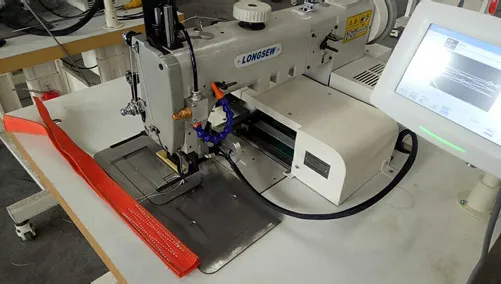Manual Sewing Machine for Leather Crafting and DIY Projects
The Art of Leather Manual Sewing Machines A Comprehensive Guide
In the realm of crafting and tailoring, few tools hold as much significance as the leather manual sewing machine. While modern machines have taken over many aspects of sewing, manual machines still offer unparalleled precision and artistry in working with leather. This article will delve into the history, functionality, and techniques involved in using leather manual sewing machines, making it an essential read for both beginners and experienced artisans alike.
A Brief History of Leather Sewing
Leather has been utilized for thousands of years, initially crafted by hand with rudimentary tools. As technology advanced, the 19th century saw the introduction of sewing machines designed specifically for heavy materials like leather. These machines revolutionized the crafting of leather goods, but the manual versions have retained a loyal following among purists and those who appreciate the hands-on approach to their craft.
Manual leather sewing machines are typically designed with simplicity in mind. They consist of a robust frame to withstand the thickness of leather and a powerful hand crank to control the needle's movement. While modern machines offer several automatic features, manual sewing forces a deeper connection with the material, allowing artisans to become more attuned to the nuances of leather.
Understanding the Functionality
Leather manual sewing machines work by using a single needle and awl mechanism—a setup that is perfect for penetrating thick leather materials. When operated, the crank rotates the needle, which pierces through the leather and pulls the thread through, creating a secure stitch. This process requires a particular skill set, as the operator must maintain tension and control to ensure consistent stitches.
One of the key advantages of using a manual sewing machine is the ability to easily adjust the stitch length according to the specific needs of the project
. Shorter stitches provide greater durability, making them ideal for items exposed to wear, while longer stitches may suit decorative projects.Techniques for Success
leather manual sewing machine

1. Choosing the Right Leather The first step in any leather sewing project is selecting the appropriate type of leather. Consider factors such as thickness, texture, and intended use. For example, tooling leather works well for crafting wallets or belts, while softer leathers are ideal for garments.
2. Preparing the Leather Proper preparation of your leather is crucial. Ensure it is clean, dry, and properly cut to the desired shape. Tools like rotary cutters, rulers, and cutting mats can help make accurate cuts.
3. Thread and Needle Selection The choice of thread and needle significantly impacts the final product. For leatherwork, use a strong, heavy-duty thread, often made of polyester or nylon, to withstand stress. Needles should be specifically designed for leather, with a wedge-shaped tip that allows for easy piercing.
4. Mastering the Art of Stitching When operating the manual machine, maintain a steady hand and be mindful of the fabric's movement. Practice moving the leather slowly to ensure even stitching. It takes time and patience to perfect this skill, so don’t rush the process.
5. Finishing Touches Once stitching is complete, don’t forget to finish the seams. Techniques such as backstitching or using edge tools can significantly enhance the durability and look of your leather goods.
Embracing the Craft
The process of using a leather manual sewing machine is not just about creating a product; it’s about embracing a craft. The tactile sensation of leather, the rhythm of the manual stitching, and the satisfying result all enhance the experience of leatherworking. Moreover, each piece created tells a story, showcasing the unique fingerprints of the artisan behind it.
In conclusion, leather manual sewing machines offer a profound connection to the artistry and tradition of crafting leather goods. While technology continues to evolve, the beauty and craftsmanship of manual sewing remain irreplaceable. Whether you're a beginner looking to explore a new hobby or an established artisan aiming to refine your skills, investing time in manual leather sewing can lead to a fulfilling and rewarding experience.
-
Boost Production Efficiency with a Pattern Sewing MachineNewsAug.29,2025
-
Industrial Excellence with the Best Heavy Duty Sewing MachineNewsAug.29,2025
-
Precision and Power with the Best Pattern Sewing MachineNewsAug.29,2025
-
Reliable Bulk Packaging Starts With the Right FIBC Sewing MachineNewsAug.29,2025
-
Advanced Packaging Solutions: Elevate Productivity with Jumbo Bag Sewing Machine and Industrial Stitching EquipmentNewsAug.29,2025
-
High-Performance Solutions for Bulk Packaging: FIBC Sewing Machine and MoreNewsAug.29,2025
-
Maximize Efficiency with an Industrial Cylinder Arm Sewing MachineNewsAug.28,2025


























